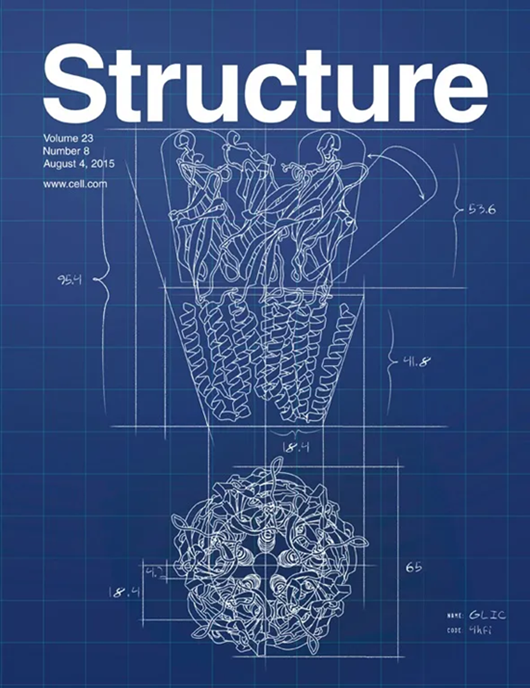细胞视黄醛结合蛋白视觉发色团释放的分子机制
IF 4.3
2区 生物学
Q2 BIOCHEMISTRY & MOLECULAR BIOLOGY
引用次数: 0
摘要
细胞视黄醛结合蛋白(CRALBP)是一种在视觉周期内起作用的11-顺式类视黄醛结合蛋白。CRALBP是视网膜色素上皮(RPE)内产生的11-顺式视黄醛(11cRAL)的终端受体,并介导11cRAL向RPE顶端微绒毛的转运。CRALBP的晶体结构显示11cral结合袋与本体溶剂隔绝,表明有必要改变构象以允许配体进入。在这里,我们对CRALBP进行了长时间尺度的全原子分子动力学模拟,以阐明配体释放的机制。在含有带负电荷磷脂的膜的存在下,CRALBP表现出较慢的扩散行为,这些磷脂与CRALBP中暴露的阳离子口袋结合。伞式采样计算揭示了11cRAL可能的热力学路径。我们的数据表明,cralbp -酸性磷脂相互作用促进11cRAL通过变构释放,构象改变,干扰结合位点,降低配体亲和力。这些发现为cralbp相关视网膜病变的分子病理学提供了见解。本文章由计算机程序翻译,如有差异,请以英文原文为准。

The molecular mechanisms of visual chromophore release from cellular retinaldehyde-binding protein
Cellular retinaldehyde-binding protein (CRALBP) is an 11-cis-retinoid binding protein operating within the visual cycle. CRALBP serves as the terminal acceptor of 11-cis-retinaldehyde (11cRAL) produced within the retinal pigment epithelium (RPE) and mediates 11cRAL transport to the RPE apical microvilli. Crystallographic structures of CRALBP revealed that the 11cRAL-binding pocket is sealed off from bulk solvent, indicating a necessity for conformational changes to allow ligand egress. Here, we performed long timescale all-atom molecular dynamics simulations of CRALBP to elucidate the mechanisms of ligand release. CRALBP exhibits slower diffusive behavior in the presence of membranes containing negatively charged phospholipids, which bind to an exposed cationic pocket in CRALBP. Umbrella sampling calculations revealed thermodynamically likely pathways for 11cRAL egress. Our data suggest that the CRALBP-acidic phospholipid interaction facilitates 11cRAL release through allosteric, conformational changes that perturb the binding site, lowering ligand affinity. These findings offer insights into the molecular pathology of CRALBP-associated retinopathy.
求助全文
通过发布文献求助,成功后即可免费获取论文全文。
去求助
来源期刊

Structure
生物-生化与分子生物学
CiteScore
8.90
自引率
1.80%
发文量
155
审稿时长
3-8 weeks
期刊介绍:
Structure aims to publish papers of exceptional interest in the field of structural biology. The journal strives to be essential reading for structural biologists, as well as biologists and biochemists that are interested in macromolecular structure and function. Structure strongly encourages the submission of manuscripts that present structural and molecular insights into biological function and mechanism. Other reports that address fundamental questions in structural biology, such as structure-based examinations of protein evolution, folding, and/or design, will also be considered. We will consider the application of any method, experimental or computational, at high or low resolution, to conduct structural investigations, as long as the method is appropriate for the biological, functional, and mechanistic question(s) being addressed. Likewise, reports describing single-molecule analysis of biological mechanisms are welcome.
In general, the editors encourage submission of experimental structural studies that are enriched by an analysis of structure-activity relationships and will not consider studies that solely report structural information unless the structure or analysis is of exceptional and broad interest. Studies reporting only homology models, de novo models, or molecular dynamics simulations are also discouraged unless the models are informed by or validated by novel experimental data; rationalization of a large body of existing experimental evidence and making testable predictions based on a model or simulation is often not considered sufficient.
 求助内容:
求助内容: 应助结果提醒方式:
应助结果提醒方式:


